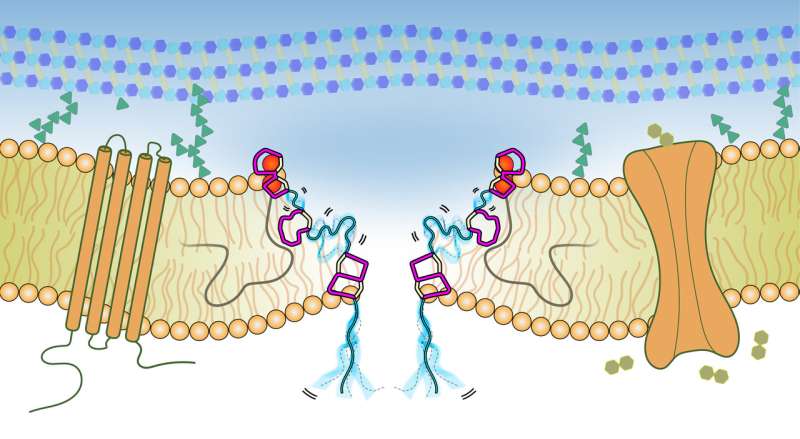Antibiotics' mode of action observed in the bacterial cell membrane

For the first time, researchers have been able to observe the mode of action of a promising class of alternative antibiotics directly in bacterial cellular membranes. Until now, such studies could only be done in less relevant media, such as organic solvents or micelles. The approach they developed could provide important cues to design drugs for combatting drug-resistant bacteria. Their findings already suggest novel cues to improve the activity of nisin, the most popular antibiotic of this class. The study, led by Dr. Markus Weingarth and Dr. Eefjan Breukink of Utrecht University, was published in Nature Communications on 27 September.
"To improve antibiotics, we need to understand their pharmacologically relevant states directly in the cellular environment", explains Dr. Markus Weingarth. "Now for the first time we have been able to do that, thanks to an advanced NMR approach. We expect our method will be extremely useful for these native structural investigations."
Antibiotics and other antimicrobials that act on bacterial membranes have aroused substantial interest as alternative antibiotics. In addition to their strong activity against drug-resistant bacteria, these antibiotics share the advantage to be robust against antimicrobial resistance development (AMR) in bacteria.
Targeting the bacterial Achilles heel
The sturdy cell wall of bacteria is a so-called peptidoglycan network. It is essential to the bacterial integrity, and its loss inevitably kills bacteria. Certain antibiotics are able to interfere with the synthesis of the cell wall by targeting the bacterial Achilles heel, a molecule called Lipid II. This mode of action can kill the most refractory bacteria.
To design antibiotics that operate through this mode of action, detailed structural information on these powerful antimicrobials is crucial. However, until now it was not possible to obtain this information under 'real life', relevant physiological conditions, critically limiting the use of Lipid II binding antibiotics as templates for drug design.
The researchers at Utrecht University have now developed an advanced high-resolution NMR approach that enables the direct study of the interactions between antibiotic and Lipid II in native bacterial cell membranes. They used nisin, the most popular Lipid II binding antimicrobial, as a showcase.
"This challenging endeavour was only made possible through the combination of high-sensitivity solid-state NMR methods and equipment hosted at Utrecht University's Bijvoet Center", Dr. Eefjan Breukink explains. "The insights we obtained with this powerful approach could establish a model of the long-elusive physiological pore-state of nisin and suggests novel cues to improve on nisin's activity." Combined efforts by the groups led by Weingarth and Breukink aim to solve the physiological relevant structures of nisin and several other antibiotics – Lipid II complexes.
More information: Nature Communications 27 September 2018, DOI: 10.1038/s41467-018-06314-x
Journal information: Nature Communications
Provided by Utrecht University Faculty of Science




















